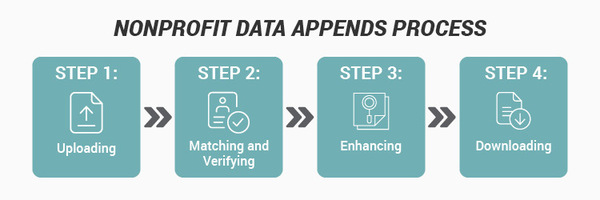Diving into donor data for the first time can be intimidating. From determining what data to collect to maintaining your donor database, you might have some questions about donor data best practices.
Your nonprofit likely knows that data is crucial for guiding its fundraising and marketing strategy. Even so, your team might not understand exactly why it’s useful and how you can fully leverage your donor data.
In this guide, we’ll answer the top five questions people ask when they’re developing their donor data strategy so you can start your data journey equipped with the information you need to be successful. Let’s get started!
1. Why is donor data important?
One of the top questions about donor data is simply: Why? Why is donor data so important?
Perhaps your nonprofit has a donor database but doesn’t prioritize leveraging, cleaning, or maintaining donor data. For organizations that don’t use donor data in their everyday operations, it can be difficult to understand why certain pieces of information about your supporters are so useful.
By regularly updating donor data, your organization can:
- Enhance donor outreach. When you understand your donors better, you can reach them more effectively. A complete donor database allows you to create donor segments and align your communications with supporters’ interests, preferences, and behavior.
- Retain donors. When you incorporate donors’ individuality into your communications, they’re more likely to continue supporting your cause. You can also use donor data to identify donors who are at risk of lapsing and create a plan to reengage them. As a result, you’ll have a more systematic approach to retaining support.
- Boost efficiency. Collecting donor data and storing it in a centralized location makes it easy for your team to analyze and implement this information. Instead of scouring spreadsheets for the data you need, you can spend more time focusing on your mission and beneficiaries.
- Increase transparency. During the grant application process, your nonprofit may need to provide proof of responsible use of funds. When you maintain and organize your data, you can easily produce data reports for potential funders. You may also feature this information in your annual report so your supporters know what their contributions are going toward.
Putting donor data at the forefront of your nonprofit’s fundraising and marketing efforts creates a better, more personalized donor experience and encourages more support for your organization.
2. What are the different types of donor data?
There is a wide variety of donor data that you should be aware of. Depending on your nonprofit’s goals, you may prioritize certain data types over others.
However, AlumniFinder’s donor data guide recommends including the following types of data in your donor database:
- Demographic information. It can be useful to know information such as age, education level, and geographic location about your supporters. That way, you can tailor your communications to different audiences.
- Contact information. Strong fundraising and marketing strategies require direct contact with your donors. Make sure you have updated phone numbers, email addresses, and mailing addresses for your supporters.
- Wealth indicators. When you conduct a wealth screening, you can learn about a donor’s employer, income, real estate ownership, stock ownership, and political giving habits. This information can help you identify major donors and create a custom fundraising outreach cadence for this group.
- Donation history. Personalize your fundraising strategy by basing current asks on donors’ past donation size and frequency. You’ll raise more when you ask donors for specific donation amounts that align with their past giving.
- Communication preferences. Some donors may prefer to be contacted by email address while others would opt for you to call them on the phone. Collect and store these preferences, along with measuring email open rates, website visits, social media engagement, and direct mail response rates.
- Past involvement. Many donors may be involved in your organization beyond their monetary contributions. When you know which donors are interested in upcoming events or volunteer opportunities, you can target them with relevant information.
- Donor milestones. Let’s say one of your donors has been contributing to your nonprofit for ten years. When you record this type of information, you can properly thank your donors for their continued support and develop meaningful relationships with them.
With a donor database full of important donor information, you can draw valuable insights that will improve your fundraising and marketing efforts. Your nonprofit will stand out from other organizations for its focus on attending to each supporter’s individual preferences and interests.
3. How do I maintain my donor database?
It’s not enough to have and use donor data. You’ll want to keep your constituent relationship management platform (CRM) organized and accurate so the information you’ve stored is useful to your nonprofit.
With proper data hygiene techniques, you can effectively maintain your donor database. Follow these three steps to perfect your data hygiene:
- Audit your database. Begin by assessing the current state of your database. Determine any problem areas and any missing data points.
- Remove any inaccuracies and unnecessary information. With data, sometimes less is more. Remove inaccurate information, and consider what information may be cluttering your database. For example, delete supporters’ phone numbers if they’re on the National Do Not Call list.
- Create a routine for ongoing maintenance. Data hygiene should be a continuous process. Make it easier for your team by developing clear data entry rules, determining how to handle errors, and only collecting essential information from your supporters.
As your data goals grow and change, you may update your data hygiene approach. For example, if you’re hosting a text-to-give campaign, consider conducting a specialized audit focused on updating your supporters’ phone numbers in your CRM.
4. How can I obtain additional donor data?
After conducting your database audit, you may notice that you need additional information about your supporters to reach them effectively. Depending on the type of data you’re looking for, there are different approaches to obtaining this information.
For concrete donor information, such as demographics and contact information, conduct a data append. Appending data involves supplementing your database with information from third-party sources.
In this process, your nonprofit uploads its current data to a data append service provider. Then, the system verifies your records, matches them with entries in external databases, and enhances your database with additional information. Once the system identifies this information, you can download it to your own database.

Let’s say you’re running an email marketing campaign. If you’re missing email addresses from some of your supporters, a data append would allow you to obtain that information and use it to reach as many donors as possible.
If you’re looking to collect feedback directly from your supporters, send them a survey. Surveys allow you to add qualitative information to your database that goes more in-depth about their interests and preferences. For example, MemberClicks recommends asking event attendees questions about their experience to improve your approach for future events.
5. What if I need help managing my donor database?
If you’re just starting with donor data management, you may be overwhelmed by the data append or hygiene processes. Alternatively, you may already have data management practices in place but want to spend more time focusing on your mission instead.
No matter what your situation is, a professional data provider can help you out. When you work with a data provider, they can take donor data management off your plate. A dedicated data team can help you with a variety of data-related services, including:
- Data quality reports
- Data appends
- Wealth screening
- Data hygiene support
- Data modeling and analytics
- Digital fundraising campaign expertise
Working with experts can ensure you’re getting the most out of your data. Additionally, they can answer any further questions about donor data you may have to clear up any confusion.
Donor data is the key to unlocking your true marketing and fundraising potential. Now that you’re more informed about how to collect and leverage this information, you can start fulfilling your nonprofit’s goals with data and make more informed decisions about your constituent communications to ultimately fuel your mission.

Guest Author: Gabrielle Perham, MBA
Gabrielle is the Director of Marketing & Sales Operations for Deep Sync. She joined the organization in 2017 and brings 20 years of experience in strategic marketing, branding, communications, sales enablement, and digital marketing. With a roll-up-your-sleeves-and-get-it-done attitude and a big-picture mindset, Gaby loves solving marketing and business challenges. She earned both a B.S. in Marketing and an M.B.A. in Marketing Management from the University of Tampa. Gaby enjoys spending time with her fiercely outspoken daughter; hiking and kayaking; rocking out in the first row of a live show; and giving back to her local community.

